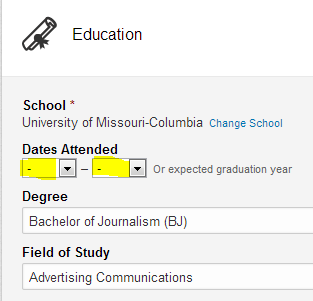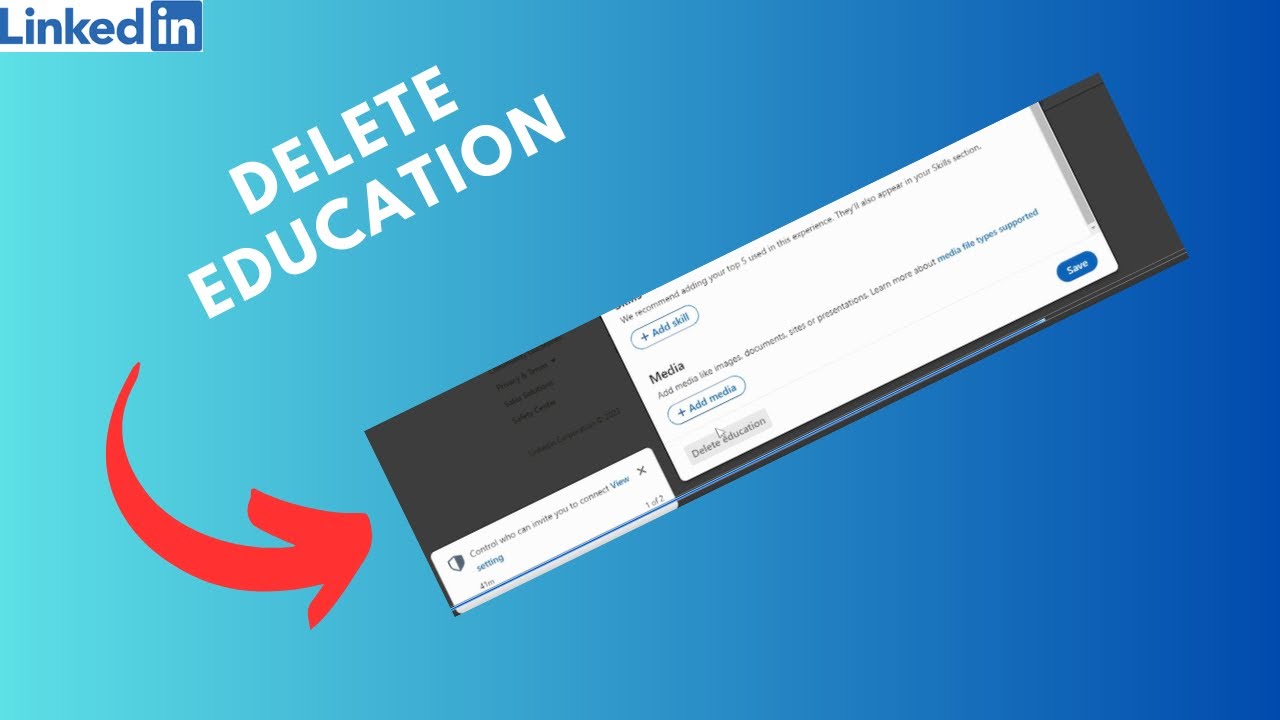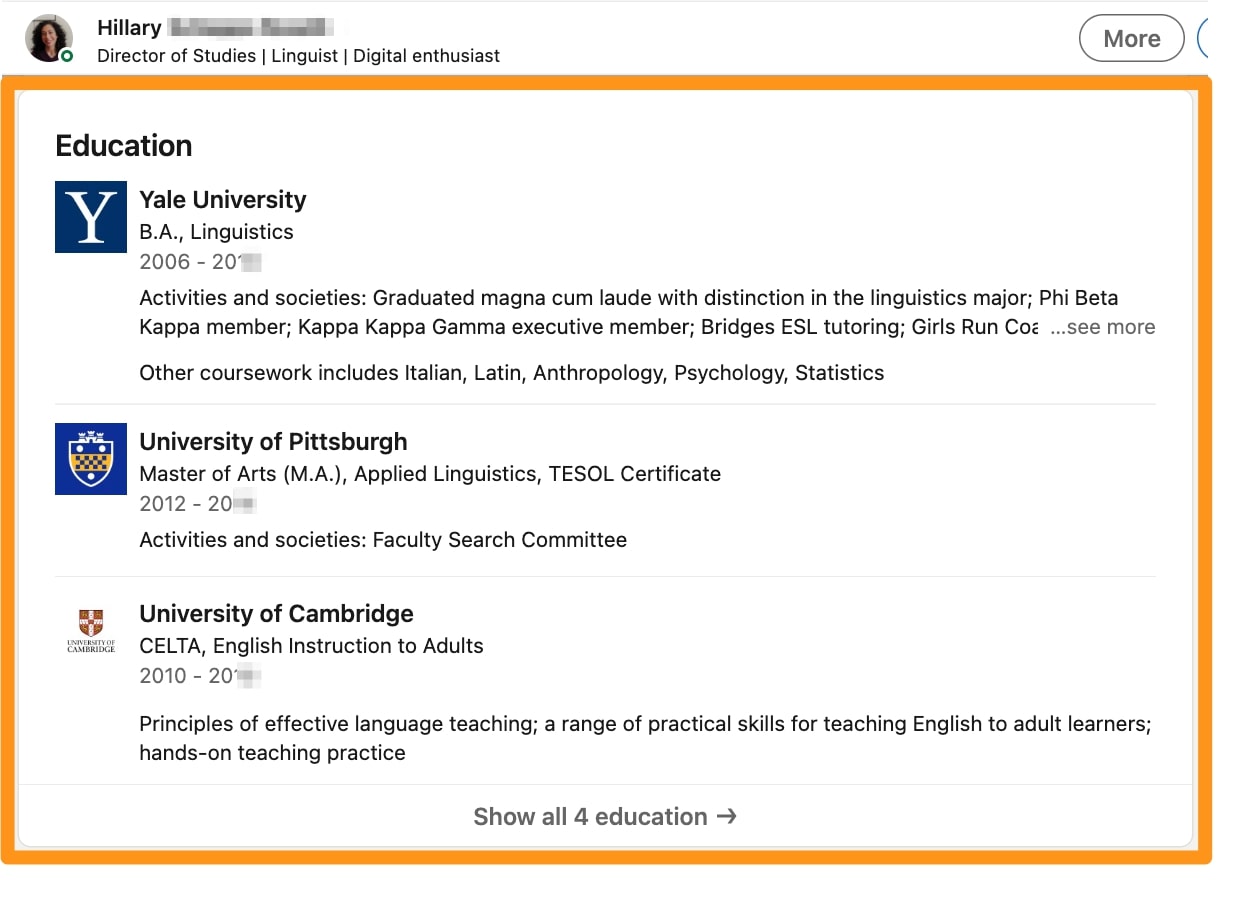If you're looking to reshape your LinkedIn profile and give it a more personal touch, you might consider removing your education history. Many professionals find that their educational background isn’t always pertinent to their current career goals or the image they want to project. In this post, we'll explore why you might want to take that step and how it can actually benefit your professional presence online.
Why You Might Want to Remove Education from Your LinkedIn Profile

There are several compelling reasons for removing your education from LinkedIn. It's not a one-size-fits-all decision, but here are some scenarios where it might make sense:
- Career Transition: If you're shifting to an industry where your degree isn’t relevant—like moving from academia to tech—removing or downplaying your educational credentials can help you focus on the skills and experiences that really matter for your new path.
- Professional Branding: Your LinkedIn profile is, in many ways, your digital business card. If your degree isn’t aligned with the image you want to convey, it might be best to omit it and highlight more pertinent experience instead.
- Focus on Skills and Experience: Employers today are increasingly valuing hands-on experience over formal education. If your profile is filled with impressive skills and accomplishments, you may find that your educational background is less critical and could be removed altogether.
- Age Discrepancy: For those who have been in the workforce for many years, including education details might unintentionally reveal your age. If you feel that age might be a bias in your industry or you want to present yourself as a forward-thinking professional, omitting this information can help mitigate that.
- Privacy Concerns: In an age where data privacy is paramount, some professionals opt to keep certain details, like their education history, private. It’s entirely reasonable to protect that aspect of your personal information.
Of course, there are pros and cons to every decision. Before deciding to remove your education from your LinkedIn profile, consider how it aligns with your professional goals:
| Pros | Cons |
|---|---|
| Allows you to highlight relevant experience. | May raise questions from potential employers. |
| Enhances personal branding. | Lack of educational context could be a disadvantage in some fields. |
| Can make your profile appear more modern. | Some industries still prioritize formal education. |
Ultimately, your LinkedIn profile should reflect who you are as a professional. If maintaining an education section doesn’t align with your current narrative, don’t hesitate to modify it. Remember, authenticity is key!
Also Read This: Creating a QR Code for Your LinkedIn Profile: A Step-by-Step Guide
3. Step-by-Step Guide to Removing Education from LinkedIn

So, you’ve decided that it’s time to tidy up your LinkedIn profile and remove some educational entries. Maybe it’s outdated information or perhaps you just want to streamline your profile. No worries! Here’s a straightforward, step-by-step guide on how to remove education from LinkedIn:
- Log in to your LinkedIn account: Open your browser, navigate to LinkedIn, and sign in with your credentials.
- Go to your profile: Click on your profile picture or the "Me" icon at the top of the page, then select “View Profile” from the drop-down menu.
- Locate the Education section: Scroll down your profile until you find the "Education" section. This is usually located below the "About" section.
- Choose the education entry to remove: Here, you’ll see all your listed degrees, schools, and educational experiences. Click the pencil icon (✏️) next to the entry you want to remove.
- Delete the entry: A window will pop up with your education details. In this window, look for the "Delete" option, usually located at the bottom of the panel. Click it.
- Confirm the deletion: LinkedIn will ask you to confirm that you really want to delete this entry. Click on “Delete” to finalize the action.
And just like that, your education entry is gone! It’s important to review your profile after making changes to ensure everything looks the way you want it to. Remember, you can always add this information back in the future if you change your mind!
Also Read This: How to Add Links to LinkedIn Posts Without Losing Engagement
4. Editing Your LinkedIn Education History

Now that you know how to remove education from your LinkedIn profile, you might be wondering how to edit your existing entries. Whether you want to correct a typo, add new accomplishments, or update your graduation date, editing your education history is a breeze! Follow these simple steps:
- Access your profile: Log into LinkedIn and navigate to your profile by clicking on your profile picture.
- Find the Education section: You’ll see the “Education” section as you scroll down your profile.
- Edit your education entry: Click on the pencil icon next to the specific degree or institution you wish to update.
- Make your changes: In the pop-up window, you can edit various fields, including the institution name, degree type, field of study, and dates attended. Feel free to add any honors or relevant coursework in the description box to make your profile more appealing!
- Save your changes: Once you’ve made the necessary edits, don’t forget to click “Save” at the bottom of the window to ensure your updates are applied.
Pro tip: Always double-check your entries for accuracy, as a polished LinkedIn profile reflects professionalism!
Remember, your education history is more than just a list of colleges; it’s an opportunity to showcase your journey and capabilities to potential employers and connections. So, keep it updated and accurate!
Also Read This: Adding LinkedIn to Your Resume: Placement and Formatting Tips
5. Common Issues and Troubleshooting Tips
When editing your education history on LinkedIn, you might encounter a few hiccups along the way. It's not uncommon, so don't worry! Here are some common issues you might face, along with useful troubleshooting tips to help you out:
- Issue: Unable to Find the Education Section
Sometimes, users can't easily locate the education section on their profiles. If you can’t find it, try the following:
- Check if you are in “Edit Profile” mode by clicking on your profile picture.
- Scroll down your profile; the education section should be below your experience. If it's hidden, you might need to expand that section. - Issue: Edits Not Saving
If your changes aren’t saving, try these steps:
- Refresh the page and attempt your edits again.
- Ensure you're using a supported browser and have a stable internet connection. - Issue: Incorrect Information Displayed
If your school or graduation dates appear incorrectly, check the following:
- Verify that the details you entered are accurate in the edit field.
- Sometimes, LinkedIn may merge data from different users if the school names are too similar. If so, you may need to report the issue to LinkedIn support. - Issue: Changes Reflecting Slowly
If your edits appear not to be updated immediately, try:
- Waiting a few minutes; changes can take a bit of time to refresh.
- Logging out and back in again to ensure you see the updated profile.
In any case, if you find yourself stuck and can’t resolve an issue, don’t hesitate to refer to LinkedIn’s help center for more assistance or reach out to their customer support.
Also Read This: Indeed vs. LinkedIn: Which Platform Is Better for Job Seekers?
6. Best Practices for Maintaining a Professional LinkedIn Profile
Your LinkedIn profile is often the first impression potential employers, clients, or professional connections get of you. Keeping it polished and current is essential. Here are some best practices to help you maintain a professional LinkedIn presence:
- Regularly Update Your Profile:
Treat your profile like a living document. Make it a habit to update it as you acquire new skills, take on new roles, or complete significant projects. This keeps your profile fresh and relevant. - Use a Professional Photo:
A clear, professional headshot can make a huge difference. Choose a recent photo with good lighting where you look approachable and confident. - Craft a Compelling Headline:
Instead of just your job title, use your headline to showcase your expertise or career aspirations. For example, “Marketing Specialist | Passionate About Digital Innovations” makes a stronger impact. - Engage with Your Network:
Regularly like, comment on, or share posts from your connections. This not only keeps you visible but also helps you stay informed about industry trends. - Collect Recommendations:
Ask colleagues or supervisors for recommendations. These testimonials provide social proof of your skills and work ethic, enhancing your credibility. - Personalize Connection Requests:
When reaching out to connect with someone, always include a personal note. A simple “Hi [Name], I enjoyed your post on [Topic] and would love to connect!” can go a long way. - Be Mindful of Content Sharing:
Share articles or insights related to your field, but make sure they align with your professional image. Avoid sharing overly personal or controversial content that could tarnish your reputation.
By following these best practices, you’ll not only maintain a professional LinkedIn profile but also enhance your visibility and network effectively in the digital space. Happy networking!
Conclusion
In today's digital age, managing your online presence is crucial, especially on platforms like LinkedIn. The option to remove your education section allows for greater flexibility in presenting your professional identity. Whether you're looking to omit outdated information or shift focus to relevant experience, the process is straightforward and empowering.
By following a few simple steps, you can make informed decisions about what to include in your profile. Remember, your LinkedIn page should reflect your current career goals and aspirations. Removing educational details that no longer serve you can enhance your likelihood of attracting the right opportunities.
Ultimately, it’s about curating a profile that is authentic and aligned with your current professional journey. Here are a few key takeaways:
- Review your education history periodically.
- Consider the relevance of your degrees or certifications.
- Ensure your profile highlights your most pertinent qualifications and experiences.
- Be mindful of industry-specific expectations regarding education visibility.
Taking control of your LinkedIn education section can lead to a more appealing and cohesive professional profile. Don't hesitate to make changes that best represent you in your career path.
 admin
admin








